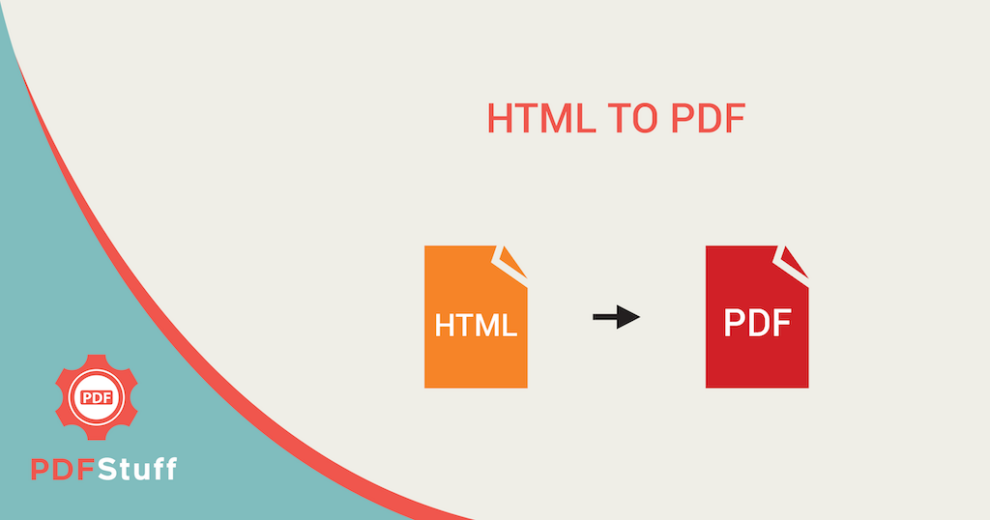While technology continues to evolve, the role of this conversion process is likely to remain crucial, enabling publishers to navigate the digital landscape effectively, create impactful content, and cater to their audience’s diverse needs. Thus, understanding and integrating the HTML to PDF conversion process into their operations can help digital publishers stay relevant and competitive in this digitally-driven age of publishing.
Conversion from HTML to PDF
The need for conversion from HTML to PDF arises when there’s a requirement for a static, portable, and universally accepted document format. Generating PDF from HTML provides digital publishers with an opportunity to create more user-friendly, shareable content while maintaining aesthetic appeal and functional coherence.
Despite being a seemingly small cog in the vast machine of digital publishing, the conversion from HTML to PDF is undeniably an indispensable part of the process, proving that sometimes, it’s the smallest details that make the most significant difference.
The dynamic nature of the internet necessitates the need for efficient and flexible mediums for data presentation. Over time, technologies such as HTML (HyperText Markup Language) and PDF (Portable Document Format) have emerged as influential contributors in this digital ecosystem. This article dives into the crucial role that HTML to PDF conversion plays in digital publishing, enhancing content accessibility, and ensuring optimal document control.
HTML stands as the de facto language for developing web pages, providing a rich platform for seamless interactivity and multimedia integration. On the other hand, PDF, developed by Adobe Systems, is a globally recognized document format that maintains formatting and content integrity across different devices and operating systems. Bridging these two technologies, we delve into the significant role of HTML to PDF conversion in digital publishing.
Digital Publishing and HTML
In the realm of digital publishing, the ultimate goal is to create, distribute, and manage content in the digital space. Here, HTML plays a pivotal role, primarily due to its flexibility and universal acceptance. HTML is incredibly versatile, supporting a vast array of multimedia content, including text, images, video, and interactive forms. Moreover, it allows the creation of responsive designs that adapt to various screen sizes and devices, ensuring optimal user experience.
However, despite these benefits, HTML comes with certain limitations. Content viewed in HTML can vary significantly in appearance and layout depending on the viewer’s browser type, version, and settings. Furthermore, sharing HTML content requires live internet access, limiting offline accessibility. These drawbacks necessitate a more robust solution — enter PDF.
The lobal Standard for Document Sharing
The PDF format brings consistency, compatibility, and comprehensiveness to the table. It preserves a document’s exact layout and formatting, ensuring that it appears the same across all devices and operating systems. PDFs also support interactive elements such as hyperlinks, forms, and multimedia, much like HTML.
However, one key distinction sets PDFs apart: they can be secured with passwords and digital signatures, providing greater control over document accessibility and integrity. Most importantly, they can be easily shared and viewed offline, making them ideal for distributing publications, research papers, e-books, and many other digital documents.
The Bridge Between Two Worlds
So how do we marry the interactive capabilities of HTML with the universal compatibility of PDF? This is where HTML to PDF conversion comes into play, creating a ‘pdf from html’ in a smooth and efficient process.
Converting HTML documents to PDF format allows the integration of rich, interactive web content into a universally accessible and shareable format. The conversion process maintains all hyperlinks, formatting, and multimedia elements from the original HTML. By doing this, publishers can extend their reach to a broader audience, including those with varying device types or limited internet access.
This conversion process is not only beneficial for end-users but also advantageous for content creators and digital publishers. They can repurpose their HTML content for various uses, such as downloadable resources, offline reading materials, or printable documents, without the need to create different versions manually.
A Game Changer in Digital Publishing
By enabling the transformation of HTML to PDF, digital publishers can maximize the potential of their content. They can combine the interactivity and flexibility of HTML with the uniformity and offline accessibility of PDFs, thus delivering a richer and more engaging user experience.
Moreover, the advent of numerous HTML to PDF conversion tools has streamlined this process, making it easier and more efficient for publishers. These tools ensure the high-quality conversion of web pages to PDFs, preserving the layout, design, and interactive elements of the original content.
In conclusion, the role of HTML to PDF conversion in digital publishing cannot be overstated. It bridges the gap between the interactive nature of HTML and the comprehensive accessibility of PDF, creating a harmonious blend of versatility and consistency. This transformative process is indeed redefining the landscape of digital publishing, making content more accessible, versatile, and impactful than ever before.







